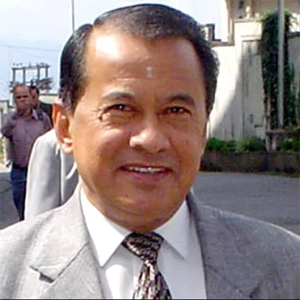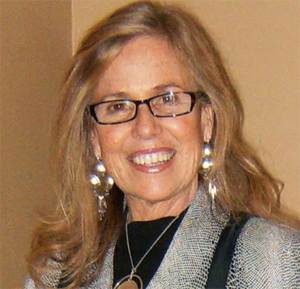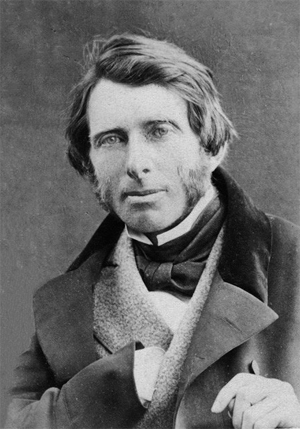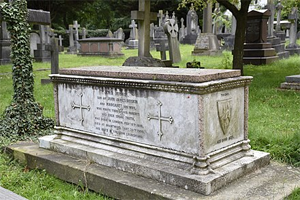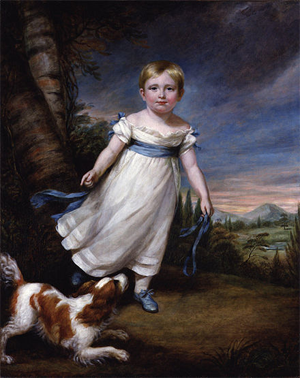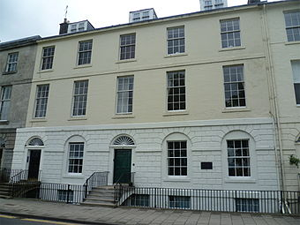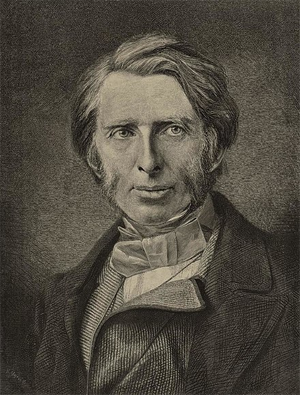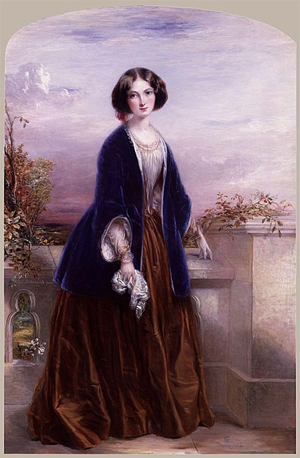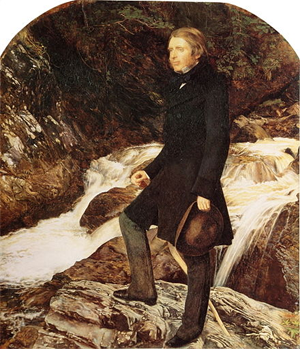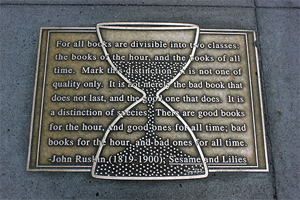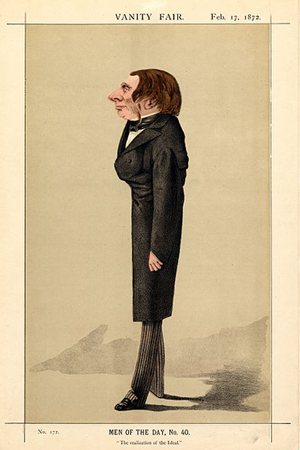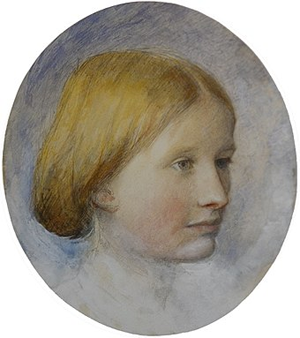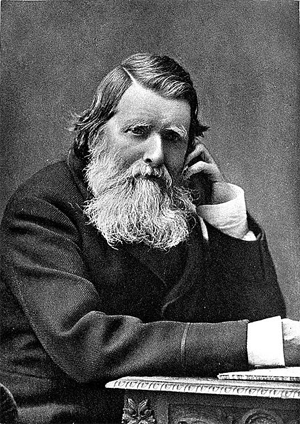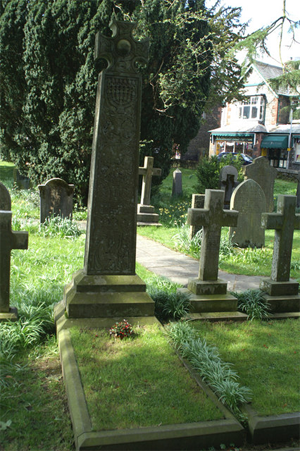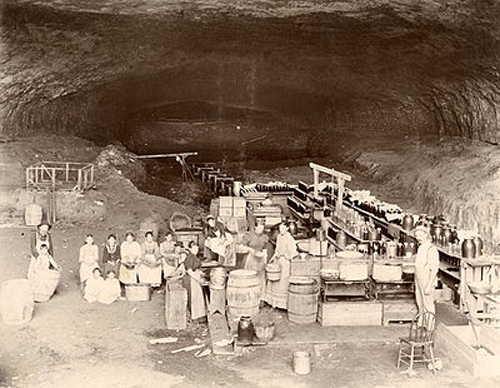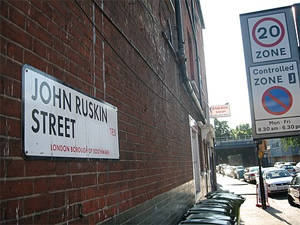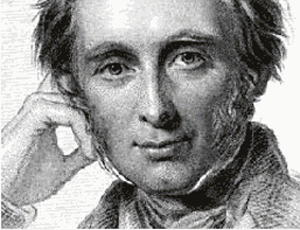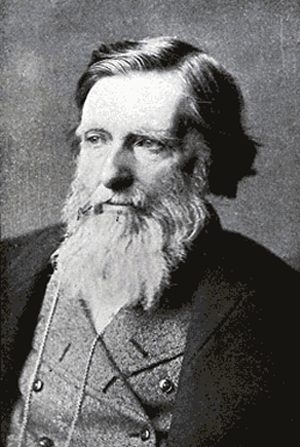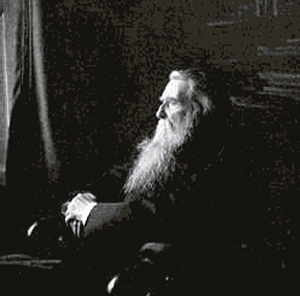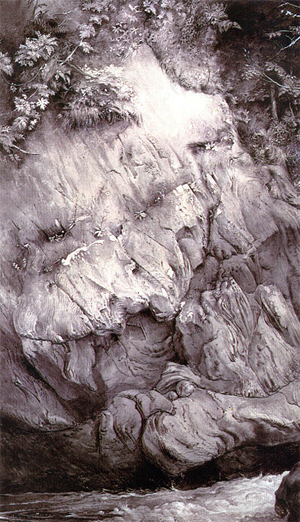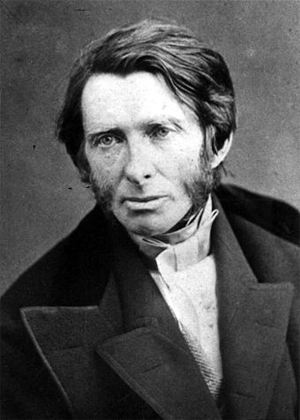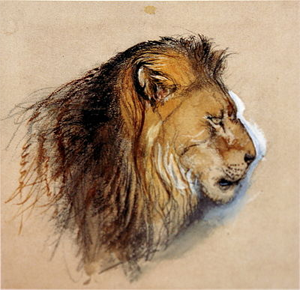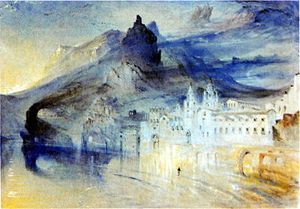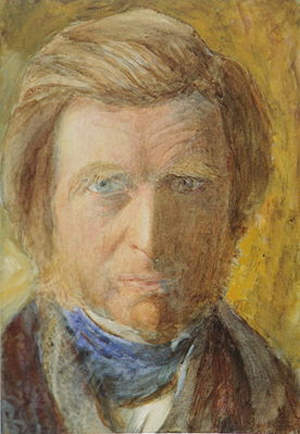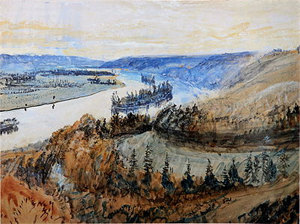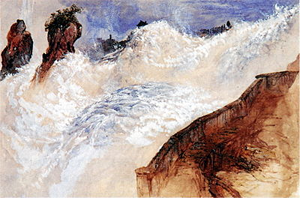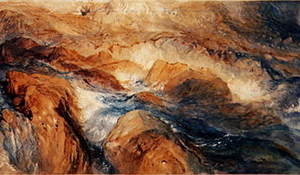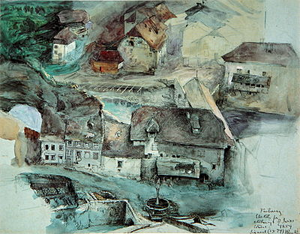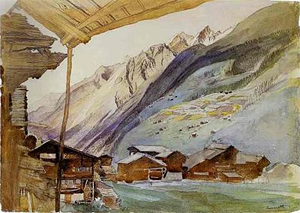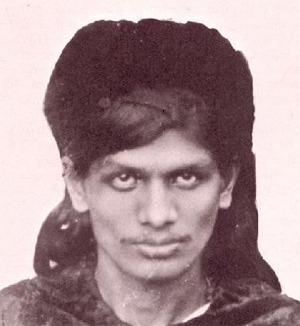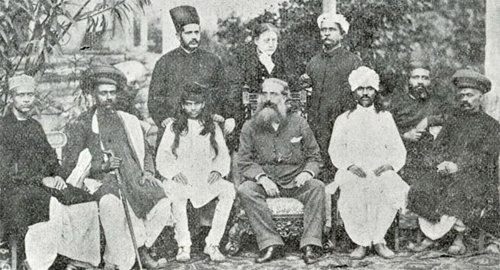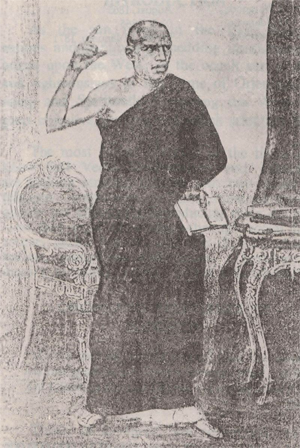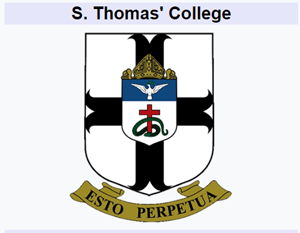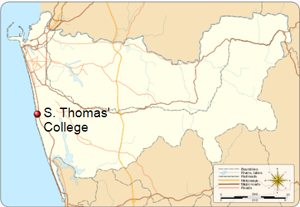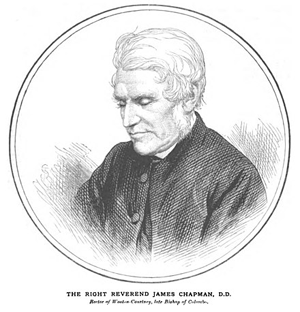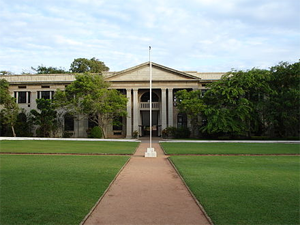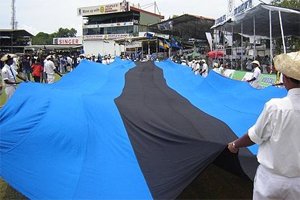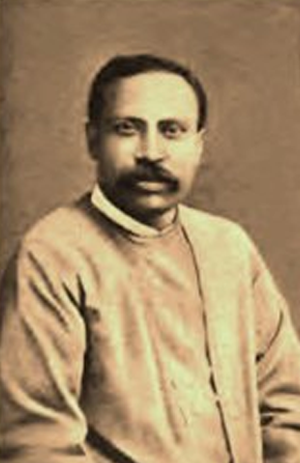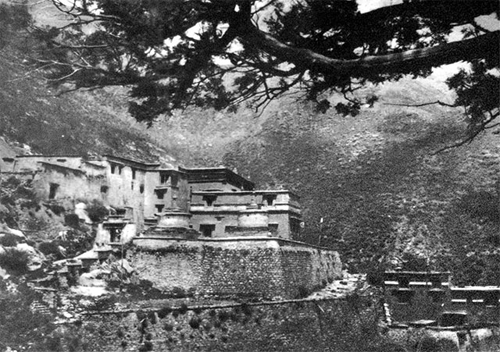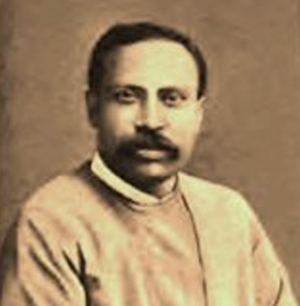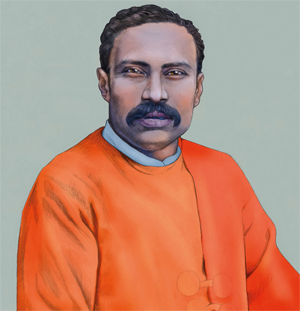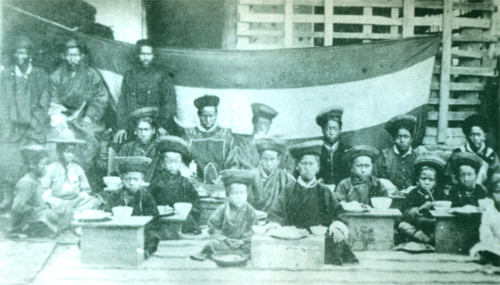Lea Terhune: About The Author
by Simon & Schuster
Accessed: 11/30/19
NOTICE: THIS WORK MAY BE PROTECTED BY COPYRIGHT
YOU ARE REQUIRED TO READ THE COPYRIGHT NOTICE AT THIS LINK BEFORE YOU READ THE FOLLOWING WORK, THAT IS AVAILABLE SOLELY FOR PRIVATE STUDY, SCHOLARSHIP OR RESEARCH PURSUANT TO 17 U.S.C. SECTION 107 AND 108. IN THE EVENT THAT THE LIBRARY DETERMINES THAT UNLAWFUL COPYING OF THIS WORK HAS OCCURRED, THE LIBRARY HAS THE RIGHT TO BLOCK THE I.P. ADDRESS AT WHICH THE UNLAWFUL COPYING APPEARED TO HAVE OCCURRED. THANK YOU FOR RESPECTING THE RIGHTS OF COPYRIGHT OWNERS.
[Lea] Terhune is the long-time secretary of Tai Situ Rinpoche, the major supporter of would-be Karmapa Orgyen Trinley.
-- Karmapa Issue, by Mick Brown, https://karmapaissue.wordpress.com/mick ... -17-lives/
NAR BAHADUR BHANDARI
Chief minister of India's northeastern state of Sikkim during the years 1979-84 and 1985-1994…..
The day after the Search Committee session, Sikkim Chief Minister Bhandari made the Karmapa search into official state government business. At his office in Gangtok, he organized a commission of four state government officials to "oversee" the search for the Karmapa conducted by the rinpoches at Rumtek. The four went straight to Rumtek and asked to speak to the rinpoches on the search committee. The officials began to inquire about the process for finding the Karmapa.
"We told them that Jamgon Rinpoche would go to look for the boy and that it would take about eight months to announce the result," Shamar told me. "But I asked them why state government people were showing interest in finding the Karmapa. These were lay people and should have been the last to know about a high religious matter like this. In Tibet, this never would have happened. Even in exile, the Constitution of India prohibited the government from interfering with religion. But in Mr. Bhandari's Sikkim, it seemed that his officials were among the first to get religious news from Rumtek. Things in exile had really gotten turned upside down."….
Shamar remained vigilant. After receiving word that Situ and Gyaltsab had started a search for the seventeenth Karmapa in Tibet, Shamar cut short a trip to the United States. He feared trouble at Rumtek and quickly returned to India. When he arrived at Bagdogra airport outside of Siliguri on his way back to Rumtek, by coincidence, he ran into Sikkim Chief Minister Bhandari. "I thanked Mr. Bhandari for having arranged for the prediction letter to be kept at Rumtek monastery," Shamar said. Earlier, at Shamar's request, Bhandari had been obliged to post guards outside the relic room at Rumtek where Situ's letter was stored. "Perhaps Mr. Bhandari would have liked Situ's prediction letter to disappear. But we made this request officially, and given the lively interest among Gangtok society in the Karmapa problems, he had to agree.
"I also informed him that I would need to borrow the letter to have a forensic test carried out. Mr. Bhandari just smiled and said that it wouldn't be possible, because he had already handed over responsibility for the 'prediction letter' to Mr. Karma Topden, a member of the Indian Parliament in New Delhi. This was a strong indication that Mr. Bhandari was himself involved. Why else would he turn down my request?"….
Later in the day, a contingent of the elite paramilitary force founded by Sikkim Chief Minister Bhandari, the Sikkim Armed Police, joined the regular police at the monastery. Given India's constitutional separation of church and state, it was unusual to see dozens of local police and security forces in a monastery. But Chief Minister Bhandari said he expected a law-and-order problem, and he claimed the police and troops were needed to maintain peace at the cloister.
Over the protests of the Rumtek monks, Situ and Gyaltsab gathered their guests and the police in the monastery's courtyard for a public meeting. Its purpose: to demand that the Rumtek administration support Ogyen Trinley. The Rumtek monks were frightened by this development and they were unprepared to respond to this unauthorized gathering. Situ and Gyaltsab were visitors at Rumtek, with no administrative authority over the Karmapa's labrang or his monastery. But they did have the eighty tough new monks and hundreds of lay followers to back them up. Even more confusing, public meetings about choosing a Karmapa were never held back in Tibet.
By this time, Shamar had arrived at his house down the road from Rumtek, but he was not planning to be at Rumtek that day. When the meeting started, the monks in charge of the monastery phoned Shamar at his bungalow, ten minutes away. They begged him to come quickly. If he did not arrive, they told him they feared that Situ and Gyaltsab would take over the monastery, using their hundreds of followers as muscle. In response to the call, Shamar left immediately for the monastery. As it happened, about twenty troops of the Indian Army's Kumaon Regiment had arrived at his house the previous day. In response to reports from the Indian Central Bureau of Investigation that Situ and Gyaltsab had bussed hundreds of followers over the Sikkim state line, including illegal immigrants from China, Indian Army command in New Delhi had ordered the troops to deploy to Shamar's house and provide him a security escort. The problems at Rumtek had now become an open issue of Indian national security.
When he left for Rumtek, the ranking officer, a captain, insisted on accompanying Shamar with five or six of his men. After the threat to the sixteenth Karmapa's life was revealed in 1977, he often entered Rumtek with a similar security detail (as we saw in chapter 6), so Shamar's having a small escort was no surprise to the monks at Rumtek, especially since the atmosphere had gotten so tense at the cloister.
But Situ's supporters have claimed that Shamar entered the monastery with the escort to intimidate Situ and Gyaltsab. Indeed, once Shamar arrived and broke up Situ and Gyaltsab's unauthorized meeting, a violent confrontation resulted between supporters of each party that took nearly an hour to pacify. Lea Terhune wrote that "the incident was strongly denounced by then Chief Minister Nar Bahadur Bhandari, who pointed out that it was the state's prerogative to call in the army, and the central government must be involved." [1] Bhandari demanded an investigation of this alleged misuse of Indian troops in his jurisdiction.
In The Dance of 17 Lives, Mick Brown describes this episode dramatically.Inside the shrine room, Shamar jumped on to a wooden table and shouted, "Soldiers and rinpoches to stay. Everybody else, leave!" An alarmed Gyaltsab turned to Situ Rinpoche and whispered, "Do you suppose they intend to kill us? Outside, scuffles had broken out, as monks attempted to prevent the armed soldiers entering the shrine room. "The old monks were saying, 'This is why we came out of Tibet,' remembers one onlooker, 'this is exactly what happened in 1959."' [2]
"This story is a grain of sand that Situ Rinpoche's people have built into a mountain," Shamar told me. "Six Indian soldiers and I were no match for Situ and Gyaltsab with more than five hundred followers and maybe fifty soldiers and police officers of Chief Minister Bhandari." It turned out that the situation was indeed dangerous -- but it was dangerous for Shamar, not for Situ and Gyaltsab. On his way to the monastery, Khampas and Sikkimese that Situ had bussed in to Rumtek assembled in front of the monastery and jeered at Shamar as he entered. The Indian captain feared a violent incident and ordered his troops to stand between the crowd and Shamar.
Shamar indignantly strode into the courtyard and saw Situ and Gyaltsab holding their meeting. "Nobody had told me about this meeting," Shamar explained. "It seemed that they were trying to do it without me." Shamar was followed by the security detail. When the two rinpoches caught sight of Shamar and his escort, they unceremoniously broke from their positions in front of the crowd. According to one observer, like commanders out of a Gilbert and Sullivan operetta, the two high rinpoches abandoned their followers in the courtyard, and beat a quick retreat to their guest rooms at the monastery. Once inside, they resolutely locked their doors and refused to come out and speak to Shamar.
"I didn't ask for the bodyguards," Shamar told me. "They insisted on following me into the monastery. I just wanted to talk with the two rinpoches. Why did they have a meeting without calling me? I was only a few minutes away. But when I arrived, they would not come out of their rooms. Did they think I was going to line them up against a wall in the courtyard and have them shot?
"I had no authority to order the Indian captain to make his troops kick the rinpoches out of Rumtek. This wasn't even in our plan. Though we feared trouble of some kind, we didn't know that Situ and Gyaltsab Rinpoches were trying to take over the monastery at that time. But looking back, perhaps it would have been better if I had requested the soldiers to remove the two rinpoches and their guests. It might have prevented worse trouble later on."
The Rumtek monks were relieved that Shamar had arrived when he did. They thought he had saved the monastery from a violent coup.
"After that, we Rumtek monks were stuck in the middle," Khenpo Ngawang, the teacher at Rumtek at the time, told me. "We were quite confused. We didn't belong to Shamar Rinpoche or Situ Rinpoche, but only to the sixteenth Karmapa. The three rinpoches were all recognized by the sixteenth Karmapa, and each was supposed to have served as head of Rumtek turn by turn. It was really confusing at that time. So we decided that we should only follow the Karmapa Charitable Trust founded by the sixteenth Karmapa.
"Then we requested Situ Rinpoche, please, because he kept trying to force us to sign a letter that Ogyen Trinley was the right Karmapa, and also another one that said if Shamar Rinpoche ever brings a Karmapa, you should not sign for him. We refused to sign these letters, we said that we didn't have the authority to decide who should be the Karmapa or not. We could not say yes or no. We only wanted to follow whichever Karmapa was the right one.
"We then asked Situ Rinpoche, since all the problems seemed to be coming from the prediction letter: Now the technology is quite good, if you put it to a forensic science test, then a hundred percent of us will all follow you. Situ Rinpoche said no. The reason was that never was a prediction done by a previous Karmapa treated like this. Also, he said that it was a very precious letter and that we could not expose it to electronic machines. He would not do the forensic science test.
"That made us more doubtful. Later, Situ Rinpoche then brought more unusual things into Rumtek -- more signs of support from the Dalai Lama. Also, he and Gyaltsab Rinpoche started collecting a lot of signatures. We found it very doubtful. Whenever Situ Rinpoche came to Rumtek he always gave a speech. But each time, there would always be some bad signs, like rain, thunder, or the Karmapa's flag blowing down from its pole.
"We asked him to let us stay in the middle of the two groups disagreeing, but he said no, you have to support Ogyen Trinley, you have to choose. We then asked Shamar Rinpoche if we could stay in the middle. He said yes and told us, 'This is not your problem; this is mine and Situ's problem. One day, I will give you my evidence and then you'll have a choice whom to follow.' That was convincing to us, and helped us decide who was right and who was wrong. Shamar Rinpoche seemed more reasonable. He gave us the choice so we could analyze for ourselves."
Curiously, to the further relief of the monks who lived at Rumtek, the eighty monks from Himachal Pradesh vanished as quickly as they had arrived. "We later found out that these young men had illegally crossed into India from Tibet and that they were hiding at the refugee camp near Situ's monastery," Shamar said. If the Indian central government discovered that the Sikkim authorities had let eighty undocumented immigrants from China cross the tightly controlled. state line into restricted Sikkim, then Chief Minister Bhandari might have faced sanctions from New Delhi. On local issues, Bhandari could usually do what he wanted, but when the Indian government feared that he was endangering Indian control over Sikkim, Bhandari faced tight scrutiny. "So he wouldn't get in trouble, Bhandari must have arranged for the eighty monks to leave Rumtek fast."….
A Himalayan Party Boss
Without the help of Sikkim Chief Minister Bhandari, Situ and Gyaltsab Rinpoches would probably never have been able to take over Rumtek monastery. Bhandari provided the state police and special forces troops to back up Situ and Gyaltsab throughout 1992 and 1993 and also prevented Shamar from getting access to Situ's prediction letter for testing. Along with Bhandari, Sikkim Chief Secretary K. Sreedhar Rao faulted Tai Situ's allies: "It is due primarily to the Joint Action Committee that an ugly situation was created in the monastery itself, as a consequence of which two groups fought each other and the group of lamas owing allegiance to Shamar Rinpoche was physically thrown out of the Rumtek monastery." [8]
From 1979 until he was ousted amidst widespread charges of corruption in 1994, Nar Bahadur Bhandari served as chief minister of Sikkim. An ethnic Nepali, Bhandari was a product of the unique politics of India's second-smallest state.
Sikkim was settled by people ethnically related to the Tibetans and ruled since the thirteenth century by the Namgyal dynasty, kings descended from the noble Minyak clan of eastern Tibet. In the seventeenth century, the Namgyal kings upgraded themselves to Chogyals, or dharma-kings, of Sikkim. The British established a protectorate over the kingdom in 1890. Afterwards, British and Sikkimese landlords from the aristocratic Kazi caste began importing migrant laborers from Nepal to work their large tea estates. In the following decades, immigrants continued to pour in, and by the 1960s Nepalis had become the majority, outnumbering native Sikkimese.
Nepali leaders in Sikkim began to clamor for more representation in the government along with new rights to promote their culture. Tensions between the Nepali and ethnic Sikkimese communities threatened to erupt into violence. Many in the Kazi ruling caste feared that within a generation native Sikkimese would become powerless in their own country unless they got help from India before then to protect their traditional culture.
For years, with covert support from New Delhi, Kazi Lhendup Dorje had led a movement of Sikkimese who wanted to join India. By the mid-seventies, Indian Prime Minister Indira Gandhi was ready to annex Sikkim. After a referendum where ninety-seven percent of voters favored union with India, Kazi Lhendup concluded an agreement with New Delhi to convert the kingdom into an Indian state. The last Chogyal, a tragic figure with an American socialite wife, abdicated. On July 23, 1975, Kazi Lhendup became the first elected chief executive of Sikkim, taking office as chief minister of the new state government.
Lhendup's deal with India reserved thirteen seats in the thirty-two-seat state legislature for ethnic Sikkimese including a couple seats representing the Buddhist sangha, but there were no seats reserved for Nepalis. This angered the Nepali majority, who denounced the agreement with India and called for Kazi Lhendup's ouster.
Nepalis revolted and Nar Bahadur Bhandari led them to power in Gangtok while also garnering the support of middle-class Sikkimese. These included the Topdens, whose resentment of the Rumtek administration that refused their son's claim to be the reincarnation of the disgraced Gyathon Tulku would lead them to back Situ's plan to take over Rumtek. To assert their rights against their traditional overlords the Kazis and in exchange for patronage from the new government, like many middle-class Sikkimese, the Topdens became strong supporters of N.B. Bhandari.
Born in 1940, Bhandari taught primary school before entering politics during the anti-Chogyal demonstrations of 1974 as a champion of Nepali rights. He formed his first government in 1977. In May 1984 Bhandari's government was dismissed amidst corruption charges. But in Sikkim, such charges usually did not mean the end of a political career, and Bhandari soon bounced back, stronger than ever. After only a year out of office, in 1985 his party won thirty out of thirty-two seats in the assembly, giving its leader unparalleled power in the state. In the next elections, held four years later in 1989, Bhandari won all thirty-two scats. With no opposition to keep him honest, the chief minister began to run Sikkim like a Himalayan Tammany Hall. He openly steered government contracts and appointments to family members and allies, especially the Topdens and other families who would later form Situ's Joint Action Committee.
Bhandari also started to employ gangs of toughs -- drawn from the unemployed youth of the Tibetan exile community who loitered around the Lal Bazaar market in the state capital Gangtok -- as enforcers for his political machine. Despite his Nepali background, Bhandari became successful at delivering spoils to the leaders of both the ethnic Sikkimese and Nepali communities. This made him popular among ethnic leaders, who were willing to overlook the chief minister's growing reputation for corruption and violence, especially since Bhandari's dirty tricks often helped them. But Bhandari took no chances, and made sure to quickly silence any opposition.
Throughout Sikkim, stories of intimidation against those bold enough to risk Bhandari's wrath during this period abound. The head of an opposition party, Madan Tamang, circulated pamphlets accusing Bhandari of corruption and womanizing. In response, Madan was arrested and died in police custody. His body was later found in bushes alongside the Rongpo River.
Shortly after this R.K. Baid, a reporter in Siliguri, located in the state of West Bengal adjacent to Sikkim, published a story detailing recent examples of corruption in Bhandari's administration. In response, Bhandari sent undercover police into West Bengal -- outside of their legal jurisdiction -- to kidnap Baid and bring him secretly to Gangtok. Police held the reporter in prison and subjected him to beatings and threats. When Baid was released, Bhandari's party offered him a payment said to be as high as five million rupees (nearly three hundred thousand dollars) to sign a statement denying that he was kidnapped or mistreated. Baid later opened a hotel in Siliguri with these funds.
Hamelal Bhandari (no relation to the chief minister) was a young attorney in Gangtok who later filed the first case in 1998 for the Karmapa Charitable Trust to try to regain control of Rumtek monastery, as we will see in chapter 13. In the mid-eighties, attorney Bhandari circulated posters around town criticizing Chief-Minister Bhandari for corruption. Afterwards, ruling party bullies abducted him and handed him over to the police, who threw him into prison. Jailers tortured the attorney and then threw him naked off a truck onto the main street of Gangtok. Observers in Gangtok at the time say he was lucky to escape with his life.
Stories of Chief Minister Bhandari's brutality helped silence potential critics his his rule. It was given that the police were his personal enforcers and that they or the Lal Bazaar toughs would punish anyone who criticized Bhandari in public. Yet, no matter how much control Bhandari had over the executive and legislative branches of the state government (along with law enforcement), in the best tradition of Indian jurisprudence the local courts remained independent. It was known that judges with integrity in Sikkim were ready to hear cases against Bhandari. However, no resident of the state dared file such a case, for it was equally well known that this would bring down the wrath of Bhandari's party bullies or the state police.
In her book on the Karmapa, Lea Terhune has written indulgently about Bhandari and brightly about his relationship with Rumtek. "Bhandari was a controversial figure in Sikkim," Terhune admitted, "often criticized for corruption. However, he respected the sixteenth Karmapa and frequently assisted Rumtek Monastery while he was in power." [9] Needless to say, since Bhandari was responsible for transferring possession of Rumtek from Shamar and General Secretary Topga (acting for the Karmapa Charitable Trust) to Situ and Gyaltsab, Shamar and his supporters view the former chief minister much more negatively.
Bhandari was skillful at running Sikkim as he liked without attracting too much attention from New Delhi. But more than once he risked sanctions for violating India's constitution. The remarkable Dr. B.R. Ambedkar, a former Dalit (Hindu "Untouchable") who converted to Buddhism weeks before his death and brought his new faith to millions of other Dalits, wrote much of India's 1949 constitution. This document guarantees freedom of worship to all and prohibits government from interfering in religious affairs. In particular, Part III lists Freedom of Religion as among the Fundamental Rights of Indians, and it strictly prohibits the national government or state administrations from interfering in religious matters. [10]
Bhandari treated the constitutional separation of church and state with contempt. Under his rule in the 1980s and 1990s, Sikkim's citizens were consistently denied the full protection of Indian law, whether freedom of religion or basic civil rights like freedom of speech. Many Gangtok officials, starting with Bhandari, were lukewarm about rule from New Delhi and not eager to enforce Indian law when it was inconvenient for their plans. It was said in Gangtok that the leading middle-class families of Sikkim such as the Topdens yearned to regain the state's independence and that Bhandari himself dreamed of becoming king of a new Sikkim free of Indian control. It was not surprising then that Bhandari's state government regularly overstepped its authority and trampled on the fundamental rights of those who were not under the chief minister's personal protection.
Indian intelligence suspected that Sikkim politicians were pursuing their own private diplomacy by trying to cultivate friendly relations with China, which did not recognize India's annexation of the kingdom until 2005. Representing Ogyen Trinley, a tulku sanctioned by the Chinese government and a Chinese citizen, it would have been easy for Situ and Gyaltsab to purchase the cooperation of Bhandari's government through substantial bribes in order to put pressure on Shamar and the administration of Rumtek. In 2002 the High Court in Gangtok decided that the state government was indeed bribed to interfere at Rumtek, but the amount of the payment and the individuals involved are still under investigation.
A Second Coup Attempt
By the fall of 1992, Situ and Gyaltsab, working with Bhandari. were ready to make their second attempt to take over Rumtek….
Just as Situ had brought in eighty young monks from his monastery, Sherab Ling, before his and Gyaltsab's abortive first attempt to take Rumtek in June 1992, five months later in the autumn he brought in thirty-two young men from Bhutan to make another attempt.
Ostensibly, these young men, also wearing monk's robes, came to enroll as students at the Nalanda Institute. But the school's administration found these young men to have little interest in study. The resident monks complained that the newcomers began to pressure them into switching their allegiance from the Rumtek administration to Situ and Gyaltsab and into accepting Ogyen Trinley as the seventeenth Karmapa. "The Rumtek monks were neutral on the Karmapa reincarnation at this time," Khenpo Ngawang told me. "It was the job of the high rinpoches to find the Karmapa, not us. It was our job to run the monastery. We tried to stay out of the arguments."
The new arrivals did not get along with the monks already living at Rumtek any better than the earlier monks from Situ's monastery did. "Some of the monks and individuals brought into the monastery from outside by Tai Situ Rinpoche and Gyaltsab Rinpoche tried virtually to rake over the monastery administration by resorting to violence and strong-arm tactics," said Chultrimpa Lungtog Dawa, one of the top monk-officials at Rumtek during the tense months leading up to the takeover.
"The two rinpoches, it later became evident, were in fact inciting and abetting this handful of their supporters gradually to wrest power from our hands and thus to take over the entire administration of the monastery with all its precious relics," Chultrimpa Lungrog said. The resident monks, who deferred to the judgment of their spiritual superiors, the high rinpoches, tried to tolerate the newcomers as best they could and to avoid confrontation in the interest of unity at Rumtek. "We also decided that we would not become involved in the trouble and that we would support neither Situ Rinpoche nor Shamar Rinpoche."
Around this time, the Joint Action Committee, Situ's political action committee in Sikkim, commandeered the Kunga Delek Guest House across from the monastery in Rumtek village. Here they set up a kind of campaign office and free snack bar for the monks of Rumtek and the families in the village. They served meals and gave out literature supporting Situ and Gyaltsab. Handouts criticized the Rumtek administration of Shamar and Topga as corrupt and urged guest house visitors to support the effort to convince or pressure all leading Karma Kagyu lamas to accept Ogyen Trinley as the Karmapa.
Guest house visitors could also receive payments from Akong Rinpoche's Rokpa Trust, which, as we have seen, were given to those who pledged their support to Situ. The foundation was supported by hundreds of individual donors in Europe to provide food, clothing, and education to deserving Tibetan refugees. Donors in Zurich or Vienna probably would have been surprised to learn that frequent recipients of Rokpa largesse included the thirty-two new Nalanda Institute students that Situ had brought in from Bhutan.
"Even though we tried to do our best, the Institute wasn't running as successfully as before," said Khenpo Chodrak, abbot of Rumtek until August 1991. "One reason was that some of the students were receiving money from the other side, with the result that they didn't attend the classes any more, didn't keep proper discipline, and didn't listen when we tried to talk to them."
Worried by the rising tension at the monastery, in mid-November 1992, Shamar asked Chief Minister Bhandari for a meeting at his office in Gangtok, Accompanied by senior staff and monks from Rumtek, Shamar requested the state government's protection. He informed Bhandari that, according to talk around Gangtok, a large group supporting Tai Situ was planning to try to take over Rumtek. Shamar asked Bhandari for state police to protect the monks' community and requested a letter to the effect that the state government would uphold law and order at the monastery.
"I still hoped that the chief minister would enforce the law," Shamar said. "But there had been enough reasons to doubt his sincerity. So we also hoped that this meeting might force the issue of state interference in religious affairs." If Shamar was able to get hard evidence that Bhandari was planning to help overthrow the Rumtek administration, he could seek assistance from officials in New Delhi to prevent the coup. In any event, Bhandari avoided incriminating himself and did agree to protect the Rumtek monks, but he never put this commitment in writing.
After meeting Bhandari, Shamar left Rumtek for Bangkok, to visit the grandmother of the King of Bhutan who was hospitalized there. Since the first time that the sixteenth Karmapa had taken Shamar to Bhutan as a boy in the sixties, Shamar had maintained good relations with the royal family of the Himalayan kingdom.
Just as before, Situ saw Shamar's absence from Runnek as an opportunity to take action and the dynamic rinpoche did not waste any time to use this chance to sideline Shamar. The day after Shamar's departure, Situ arrived at Rumtek accompanied by an official of the Sikkim state Department of Ecclesiastical Affairs, a police escort, and a crowd of a couple dozen Khampas from his political action committee in Kathmandu, the Derge Association. Situ had arrived to move into Rumtek. In addition, he wanted to hold a meeting of his followers there the next day, while Shamar would be away.
Rump Parliament
When Situ and his group arrived at Rumtek, they found the monastery office closed. The government official forced Lekshe Drayan, the assistant secretary at Rumtek who had helped the sixteenth Karmapa to pack the Black Crown before fleeing Tsurphu for exile in 1959, to open the office for him. The official demanded to know why the office and other rooms at the monastery were locked when Situ Rinpoche was planning to come to Rumtek. Lekshe asked what business this was of the official's, since Rumtek was a private religious institution. The official threatened Lekshe, saying he was sent by the Sikkim state government and the monk should obey or face jail time.
The Sikkim official insisted that Situ should have access to any room in the monastery. Lekshe replied that Situ already had a guest room there and was able to use it any time he visited Rumtek. The official became impatient, and lectured Lekshe. "No, Situ Rinpoche must be given Gyalwa Karmapa's own room next to where the Black Crown is," the official said, according to Lekshe. Then, to underline the importance of this order, the official added, "These are the direct orders of the chief minister of Sikkim, Nar Bahadur Bhandari."
The official told Lekshe that he had ten minutes to think about it or face the consequences. Lekshe decided that he had little choice but to comply. He led the official, followed by his police escort, up to the sixteenth Karmapa's suite above the main temple, opened the rooms and gave the keys to the official, who in turn passed them on to Situ, who moved in later the same day. For the next year Situ would make the Karmapa's private rooms his own.
The next day, November 27, Gyaltsab joined Situ at Rumtek, accompanied by more lay people from the Derge Association in Nepal and Situ's other political action groups. Without gaining permission from Topga Rinpoche or the Rumtek administration, the two rinpoches convened a six-day meeting of their supporters. "A large number of people from outside Sikkim were brought into the monastery by the two rinpoches, apparently to demonstrate their numerical strength," Rumtek monk-official Chultrimpa Lungtog said. "This meeting was organized without consulting us and against our wishes and consent, with the sale intention of illegally taking over the Dharma Chakra Center and the powers and privileges vested in the monastic community by H.H. the sixteenth Gyalwa Karmapa."
"When we learned that they were about to convene the so-called 'International Meeting' we, the original staff members and Rumtek monks, wrote a letter to those who were organizing this meeting," said Omze Yeshey, another monk-official at Rumtek before August 1993. "We made it clear that we, the Rumtek monks, were in charge of the monastery and that we would accept this meeting and its resolutions only if it was held in cooperation with the trustees of the Karmapa Charitable Trust." But Situ and Gyaltsab ignored this letter and proceeded with their gathering.
The rinpoches dubbed their group the "Kagyu International Assembly." In The Dance of 17 Lives Mick Brown wrote that in attendance were "representatives from KTD at Woodstock, from Samye Ling, Australia, Tibet, India, Nepal, and Bhutan. Also present were representatives of the five Kagyu monasteries, six Buddhist organizations and eight Tibetan organizations in Sikkim." [11]
But to the monks at Rumtek the group was little more than a lynch mob made up of followers of Situ, Gyaltsab, and their ally, former Rumtek Abbot Thrangu. "These people seemed excited, impatient, and angry. We were scared that they would take over the monastery," Khenpo Ngawang told me. The chairman of the meeting, Kunga Yonten, a Sakya lama -- whose school, of course, had no connection to Rumtek -- led the excited crowd in throaty support for one demand after another. These included a request to the Dalai Lama to restore the defunct Lhasa government's old ban on Shamar Rinpoche, as well a denunciation of Shamar and Topga for ordering, earlier in the year, that the valuables at Rumtek be locked away for safekeeping. This demand only made the monks more afraid that Situ and Gyaltsab's true interest in Rumtek was its valuables.
The day's main goal was to grant Situ and Gyaltsab legal control over Rumtek. And that meant trying again to take control of the Karmapa Charitable Trust. The meeting voted to dissolve the board of the trust and constitute a new board stacked with Situ's supporters. Then, this new would-be trust tried to dismiss Topga Rinpoche as general secretary and replace him with Tenzin Namgyal, the brother-in-law of former Abbot Thrangu. Both men were staunch allies of Tai Situ. Though the Rumtek administration did not recognize the authority of this meeting or its decisions, from November 1992 until his death in 2005, Tenzin claimed to be the general secretary of the Karmapa's labrang.
Halfway through the week of meetings, on November 30, Tai Situ submitted a request to the Sikkim Land Revenue Department, where the Karmapa Trust charter was filed, to change the membership of the board as his meeting had decided. On the following day, December I, Land Revenue Commissioner T. W. Barphungpa Kazi released an official letter in response. He rejected Situ's request and ruled that his "delegates" had no right to make decisions concerning the Karmapa Trust; that the actions of the Kagyu International Assembly relating to the trust were illegal; and that, accordingly, the trustees would remain as before. Situ and Gyaltsab filed an appeal to this decision, but later withdrew their request.
Thus, after the conclusion of the Kagyu International Assembly, Situ and Gyaltsab had failed a second time to take over Rumtek. If they wanted to gain control of the cloister, they would have to try a different approach. Chultrimpa Lungtog said that soon after the meeting, Situ and Gyaltsab asked for help from Chief Minister Bhandari. They wanted him to expel Rumtek General Secretary Topga from Sikkim. Bhandari agreed, and in February 1993 the East District Magistrate issued an order banning Topga Rinpoche from entering the eastern part of Sikkim, where Rumtek was located.
With its general secretary prohibited from entering the state, Rumtek became more vulnerable than ever. According to Chultrimpa Lungtog, the monks at Rumtek learned through sources in Gangtok that Bhandari also told Situ and Gyaltsab that he was ready to help them take over Rumtek, but that he would need a pretext to send in police officers. Reportedly, the chief minister advised the two rinpoches to create a scuffle or fight inside the monastery that would require the police to intervene.
"By June or July 1993, the situation in the monastery had already become very tense," Chultrimpa Llingtog explained. "Supporters of Situ Rinpoche and Gyaltsab Rinpoche indulged in reckless violence within the monastery premises." In May 1991, Rumtek guests vandalized a jeep belonging to the cloister. The next month, a student named Trinley Dorje from Sonada Monastery stabbed Sonam Tsering, one of the teachers at the Nalanda Institute. Sonam and the Rumtek administration filed a criminal complaint with the police, who arrested the stabber. But he was soon out on bail provided by Kunzang Sherab, the president of the Joint Action Committee in Gangtok. The police took no further action against the stabber. Minor scuffles became commonplace at Rumtek, and with Topga unable to enter Sikkim to reassume the helm at the cloister, it was clear that management of the monastery was slipping out of the hands of the Karmapa's labrang.
Chultrimpa Lungtog said that the Rumtek monks "found it impossible to control the criminal elements brought into the monastery by the two rinpoches." As with the stabbing incident, when the Rumtek administration reported other problems with the new students to the police, nothing happened. "We never realized that Situ Rinpoche and Gyaltsab Rinpoche had successfully bribed the police officials and state government civil servants concerned in order to take over the monastery administration through acts of violence and criminal intimidation."
We have seen how Situ and Gyaltsab appeared to take advantage of any time that Shamar was absent from Rumtek to make a move. In June 1992, they announced the Dalai Lama's support for Ogyen Trinley when Shamar was off-site, at his residence near Rumtek village. five months later, in November of that year, when Shamar was in Thailand, Situ and Gyaltsab held the so-called Kagyu International Assembly.
Following this pattern, on June 26, 1991, to celebrate Ogyen Trinley's birthday, Gyaltsab came to the shedra and organized a party. Shamar was also away from Rumtek at the time, again at his residence. According to Khenpo Chodrak, the school's head teacher, on this occasion Gyaltsab told the students that. from now on it would be sufficient for them to just wear their monks' robes, they didn't have to attend classes or complete coursework. "From that point on, discipline at the Institute collapsed. Many of the students didn't study anymore and didn't abide by the rules," Chodrak said. In The Dance of 17 Lives Mick Brown wrote that a rainbow appeared over Rumtek on the day of this birthday party, an auspicious sign. But birthday parties, even for realized masters, were not prescribed in the Vinaya, the Buddha's rules for monks and nuns, and the Rumtek administration watched helplessly as discipline eroded at the school.
The next day, Shamar called the police and brought an officer with him to Rumtek to lecture the students. "I reminded them that they were only guests at Rumtek and should follow the rules and not try to interfere in the monastery's affairs. Otherwise, they were free to study and enjoy the facilities that we provided to them free of charge." Officer Sundar, the policeman who had accompanied Shamar, told the students to follow the school's rules in the future. Apparently, the officer had not received clear enough instructions from his superiors in Gangtok on how to behave at Rumtek. Soon after this incident, his superior lectured Officer Sundar, demoted him in rank, and then transferred Sundar away from the area.
At the end of this meeting, Shamar asked the monks to sign one of two lists. One list was for those who would obey the school rules, the other was for those who refused to do so. "Most of Situ's followers signed the second list, including the thirty-two monks Situ had brought in from Bhutan," Shamar told me. "This might sound like bold and shocking behavior for students who were Buddhist monks, but actually I was not surprised. I think that most of these young men had not taken monk's vows, but they simply pretended to be monks. They did not respect the Rumtek administration; they seemed to be loyal only to Situ Rinpoche."
A few days later, the Rumtek office forwarded the names of the monks on the "disobey" list to the minister of education in Bhutan with a request for information about their background. In response, the Bhutanese government confirmed that many had been convicted of theft or violent crimes, and some had even escaped from Bhutanese jails. But without the help of the Sikkim police, the Rumtek administration was powerless to expel these young men from the monastery or send them back to Bhutan.....

